This week we made our way to Luis De Jesus’ opening of Britton Tolliver’s Bend To Play and Ethan Gill’s, New Paintings.
Upon walking into the gallery, we were met by the boldly colored geometric abstract paintings by Tolliver. The vibrant works featured thick layers of smoothly applied paint the resulting decisive forms suggestive of decadent topographical psychedelic maps. The satisfying hardy spreads of acrylic paint resulted in the paintings existing more as sculptures and exemplified the physicality of Tolliver’s practice, which requires pushing paint through sieve-like grids.
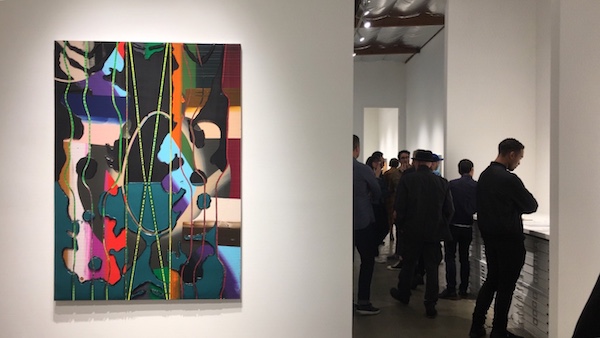
Britton Tolliver at Luis De Jesus.
While walking through the show, I was lucky enough to gain some insight from the associate director at Luis De Jesus, Meghan Gordon. She revealed that Tolliver began his artistic practice while serving time in prison and it was through his painting process of tension and boundaries that he found expression and release.
The very title, Bend To Play, brings up themes of athleticism and sport, Tolliver’s lively and hallucinogenic imagery reminding us that we are all players in the game.
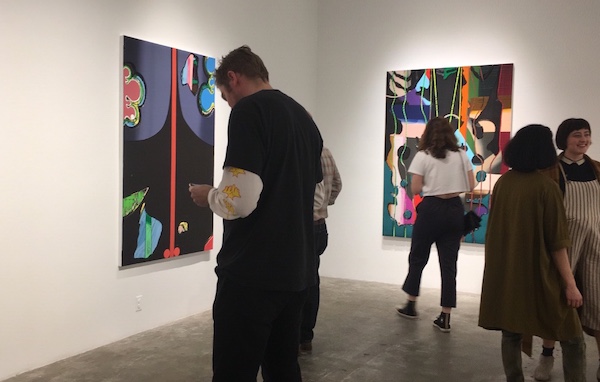
Britton Tolliver at Luis De Jesus.
Next we ventured into the space displaying Ethan Gill’s, New Paintings. These works depicted cropped figures submerged in water. Most compositions revealed only toes and torsos of the subject surrounded by bubbles, as if plunged into the pools merely moments before.
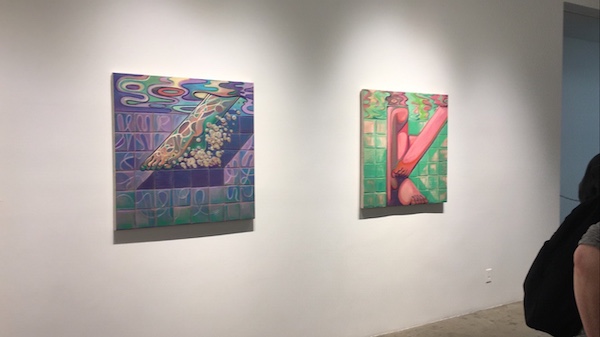
Ethan Gill at Luis De Jesus.
Although the figures are hearty and exist on primarily gridded backgrounds, Gill maintains a very strong sense of floating, which I found enjoyably evocative and poetic. Gill abstracts the patterns of the waters’ reflections beautifully, highlighting the psychological properties of light in a physical space.
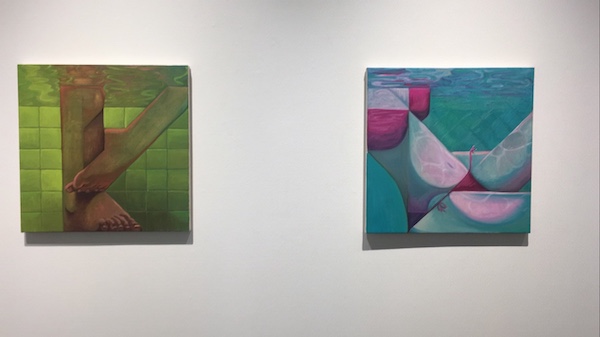
Ethan Gill at Luis De Jesus.
I especially enjoyed one work, Shallow Standing, which depicted the arch of a foot wrapped around the ankle of a leg to an unknown swimmer. Pink reflective highlights wrap around the toes and legs reminiscent of a swim at the end of a warm summer day.
Both Tolliver and Gill present works innately physical in process and product yet, both insinuate notions emotional and spiritual, leaving us with more to drive into and absorb.





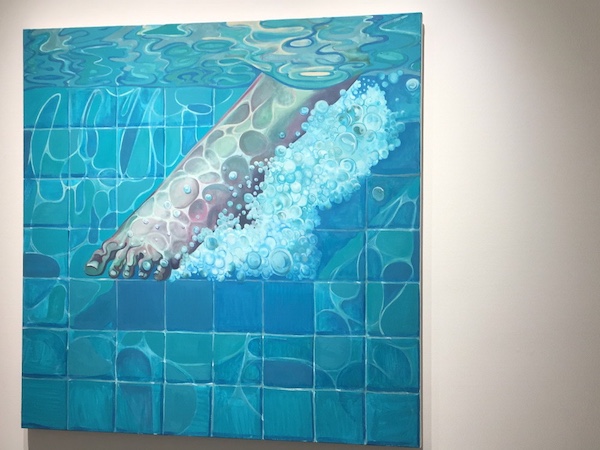













0 Comments